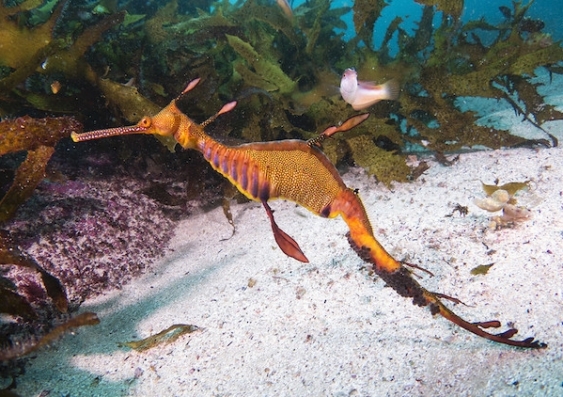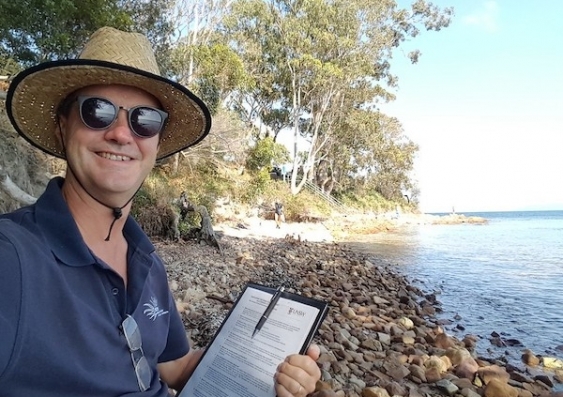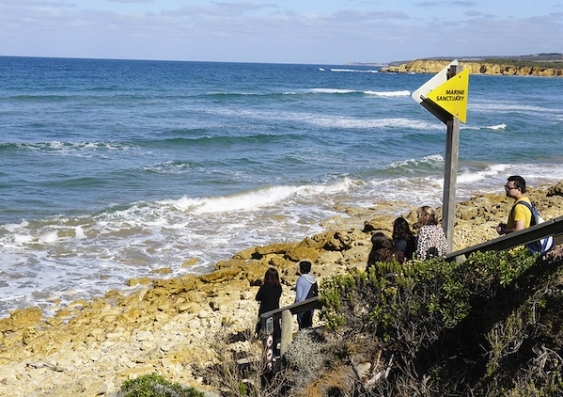Are partially protected areas the ‘red herrings’ of marine conservation?
Partially protected marine areas create confusion and don’t meet their broad conservation objectives, UNSW researchers have found.
Partially protected marine areas create confusion and don’t meet their broad conservation objectives, UNSW researchers have found.

Partially protected areas – marine reserves that allow some forms of fishing – are no more effective socially or ecologically than open marine areas in Australia’s Great Southern Reef, a new UNSW study has concluded.
The research, published in Conservation Biology today, comes at a time when the High Ambition Coalition of 50 countries of the world (which does not include Australia) have pledged to protect more than 30 per cent of the planet’s lands and seas by the end of this decade. But not all protected areas are created equal.
The UNSW study discovered partially protected areas in southern Australia had no more fish, invertebrates or algae and no difference in the mix of users – and they were not valued any more highly by users than areas outside reserves (open areas).
The social and ecological researchers found fully protected areas (no-take or sanctuary zones), by comparison, had more fish, higher biodiversity of marine life and were an attraction to many coastal users both for their ecological and protection values.
Lead author John Turnbull, UNSW Science researcher, said partially protected areas appear to be the “red herrings” of marine conservation as they distract us from achieving more effective protection.
“Marine protected areas are the umbrella term for managed marine areas and can be fully or partially protected. They are a primary tool for the stewardship, conservation and restoration of marine ecosystems but globally, 69 per cent of marine protected areas are open to some form of fishing,” Mr Turnbull said.
“This is a surprise to many people – almost half of the people we surveyed in partially protected areas (42 per cent) mistakenly thought they were in a reserve that protected fish.
“Just 12 per cent of people knew they were in a partially protected area, compared to 79 per cent of people in fully protected areas who correctly identified they were in one.
“This is not a small issue; three-quarters of Australia’s marine protected area is open to fishing. Most partially protected areas in Australia even allow commercial fishing, which, on an industrial scale, is contrary to international (“IUCN” – International Union for Conservation of Nature) guidelines.”
The UNSW Sydney study spanned 7000km of coast and five states. The authors assessed 19 fully protected areas, 18 partially protected areas and 19 open areas. They each had different rules and marine communities but they all had broadly stated goals, such as the conservation of biodiversity and ecosystem integrity.
The researchers conducted 439 interviews and 190 observation surveys to gauge the social impact of each area (human use, perceptions and values), and analysed existing data from 625 underwater visual census Reef Life Surveys to determine the ecological impact of protection on marine communities (fish, invertebrates and algae).

UNSW Science researcher John Turnbull began his Australian Great Southern Reef field trip at Fly Point, Nelson Bay. It was the first day of his four-month journey surveying locations from Port Stephens to Perth, researching people's perceptions and stewardship of the marine environment. Photo: John Turnbull
Mr Turnbull said the research team found no social or ecological benefits for partially protected areas relative to open areas. For example, the ecological data revealed that fish species richness and biomass were higher in fully protected areas, but not in partially protected areas. There were 1.3x more fish species, 2.5x more fish biomass and 3.5x more large (20+ cm) fish biomass in fully protected areas compared to open areas.
Mr Turnbull said: “Global studies support our findings: there is a lot of research that shows a reduced, if any, impact of partial protection and it depends on the strength of that partial protection.
“Despite this, fully protected areas are often a very small percentage of a marine park; for example, Sydney’s recently proposed marine park had less than three per cent designated as fully protected sanctuary zone, meaning 97 per cent of the area would be open to fishing if the park was approved. This is the degree of ‘red herring’ we are experiencing.”
Mr Turnbull said their research also busted the myth that fully protected areas were unpopular.
“On the contrary, 92 per cent of people we surveyed said they supported protected areas that restrict fishing. We believe our research reflects the general views of coastal users, because we designed our sampling to represent all the different types of user at each site; people swimming, walking, diving, fishing and so on.
“And there was virtually no difference in support for protected areas between people who fish and people who don't – just one per cent.”
Mr Turnbull said the researchers also found most people were passionate about their local coastal areas.
“People want to see their area looked after and properly protected, especially with sanctuary zones. Often, people specifically visited these because they knew the area was fully protected, and they had personally observed the improvement in marine life” he said.
“In fully protected areas, we found a higher number of certain types of users; twice as many divers and over three times as many snorkelers. This showed people were directly experiencing the values of fully protected areas and acknowledged them and were attracted to them. This was not the case for partially protected areas; the mix and number of users in these areas were no different to open areas.”

People enjoy a marine sanctuary at Torquay, Victoria. Photo: John Turnbull
Study co-author and UNSW Dean of Science Professor Emma Johnston said if governments were going to allocate conservation resources to protect marine areas, they needed to be sure the “investment” was paying off.
“The current trend towards downgrading fully protected areas to partially protected areas in many parts of the world, including Australia, may be wasting precious conservation resources. Partially protected areas could still be useful but only for specific purposes; for example, to support traditional management practices, protect a particular threatened species, or to create a buffer zone for a fully protected area,” Prof. Johnston said.
“But the results of our substantial study suggest that partially protected areas may be overused and represent a distraction from true conservation measures. The public are confused by partially protected areas and the general biodiversity is no better off.”
Prof. Johnston said she hoped the researchers’ findings would encourage decisionmakers to consider whether their conservation approach was fit for purpose.
“If we are going to truly protect our planet, partially protected areas must be monitored regularly and the results made public, because if they are failing to provide social or ecological returns, those areas should be upgraded to the level of protection that we know works,” she said.